This post may contain affiliate links. As an Amazon Associate I earn from qualifying purchases, but there is no additional cost for you. Please see my Disclosure page for more information.
I’ve hiked with trekking poles off and on for years, but I’ve only recently started using a hiking staff. Trekking poles are great for helping me keep my balance, but awkward to keep hold of if one of the boys needs something. Anyone who’s tried to hold two poles in one hand while holding a little hand in the other knows what I mean.
Now, trekking poles definitely have their place. Take this stream crossing for example. We had to balance on the rocks while crossing, and our trekking poles definitely made it easier. No one fell in and got soaked on a cold day.
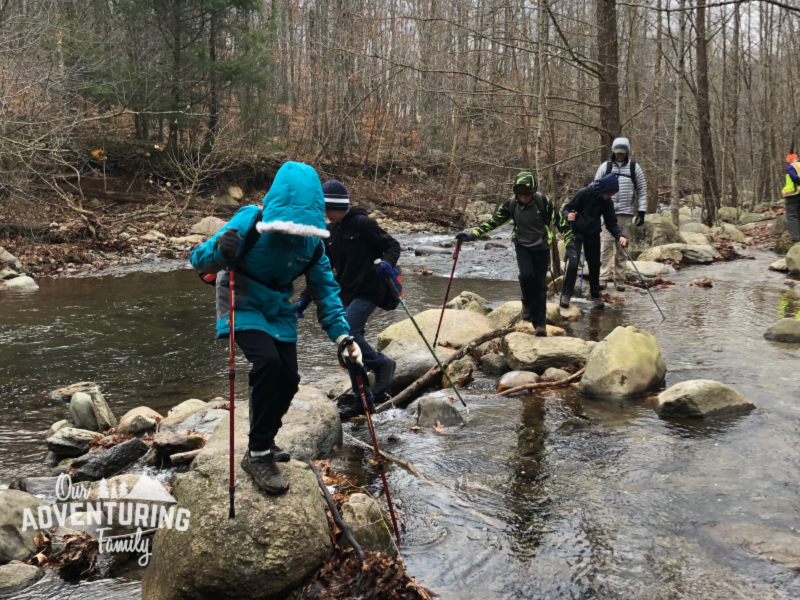
When I attended Wood Badge a year and a half ago, one of our patrol projects was to make a wood hiking staff for each patrol member. Our Wood Badge training took place over two weekends and we worked on our projects in the time between those weekends. When we went back for our second weekend of training, I found the staff really helpful for getting around camp while wearing my fracture boot. I was done with crutches, but the staff was nice to lean on when my foot started hurting.
When I took the kiddos out hiking after I ditched the boot completely, I took the staff along with me for help with balance. I’m trying to be more aware of where my feet are so I don’t have another accident and my hiking staff helps with this. The parts I’ve appreciated the most: increased stability and a free hand to help the boys with whatever they need. I also feel more comfortable putting all my weight on the staff than trekking poles if (oh, let’s be realistic: when) I trip.
My hiking staff is made from skip peeled lodgepole pine. Pine is a soft wood, so I know it will not stand up as well as a hardwood staff. However, we’ve had the lodgepole pine in our shed for years and it’s good to finally be using some of it. Eventually I’ll replace it with an oak staff, but for now, the pine staff works.
There are many ways to use a hiking staff, but in the interest of not making a super long list, I combined a few uses, left a lot off, and tried to go with the ones I though were most likely to be used.
6 Uses for a Hiking Staff
1. Pull someone up a hill
Sometimes my boys decide they are done. When that happens, I have them grab one end of my staff while I hold the other and I pull them along. If nothing else, it helps their morale.
In a more serious application, you could also use it if someone fell down the side of a cliff and needed help getting back up to the trail.
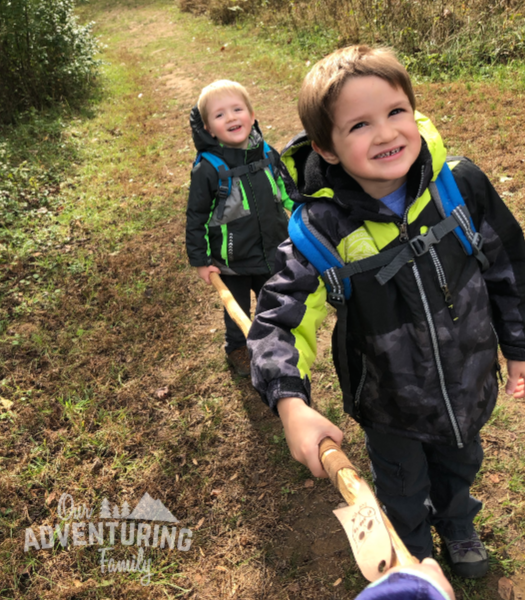
2. Keep rope handy and build a simple shelter
Wrap a length of parachute cord around the staff and you’ll always have rope when you need it. Paracord is thin, lightweight, and very strong, making it a valuable add-on to your hiking staff. As you can see in the pictures, I currently have a simple leather lace on my staff as a handgrip. I plan on replacing it soon with some much more useful paracord. (it’s on the never ending to-do list….)
To make a simple shelter, use your staff to support a tarp or other covering. Then use the paracord to tie everything in place.
3. Test ice for thickness and stability
If you’re winter hiking, you can use your staff to test the thickness of ice. You can also check the stability of the surface you’re on. This can be handy regardless of whether ice is present. You can use trekking poles for this purpose as well, but the added length of a hiking staff makes it a bit more useful.
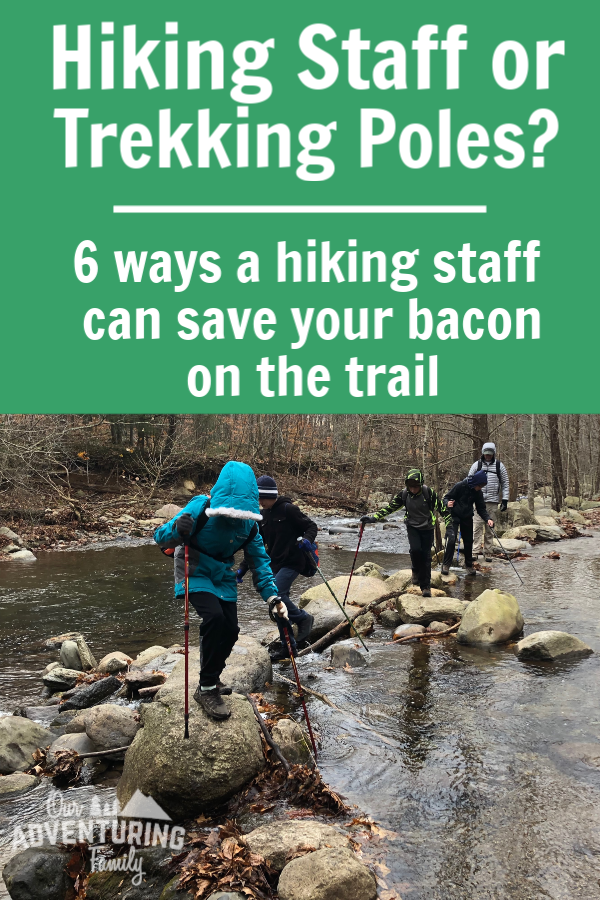
4. Clear your trail
Use your staff to clear your trail of underbrush or critters. Push overgrown brush away from the trail without using your hands. This is especially helpful when poison ivy or sticker bushes are impeding your way. I can get poison ivy just by looking at it, so this is super handy for me.
Many trails stipulate that dogs should be on a leash, but some owners ignore those rules. This means we frequently come upon unleashed dogs while hiking. Most have been friendly, but not all, and their owners are usually far enough away that they couldn’t intervene if needed. Having my staff makes me feel a little bit safer. I know that I can use it to protect us if we were to be attacked by a dog or other unfriendly wildlife.
5. Make a splint or makeshift crutch
If you fall and injure your foot or leg, a hiking staff can help you limp back down the trail to your vehicle. I didn’t have a staff or trekking poles when I fell and broke my foot. I sure wish I did, because it would have made the painful hike back to the car easier.
If you do manage to fall and break a leg, you can use your hiking staff to splint your leg. Use the paracord wrapped around your staff to hold it and other splint materials in place.
6. Give extra support when carrying a load on your back
If you’re carrying a heavy backpack or a child on your back, your center of gravity is affected. A hiking staff can help you maintain your balance, especially on rough terrain or when fording a stream or river.
~~~~~
This list only scratches the surface of the many ways you can use a hiking staff. I found a number of Scouting-related uses here and here, which are applicable for many people, not just Scouts. I’m now thinking about some items I want to add to my staff.
Do you use a hiking staff? Do you prefer a staff or trekking poles?
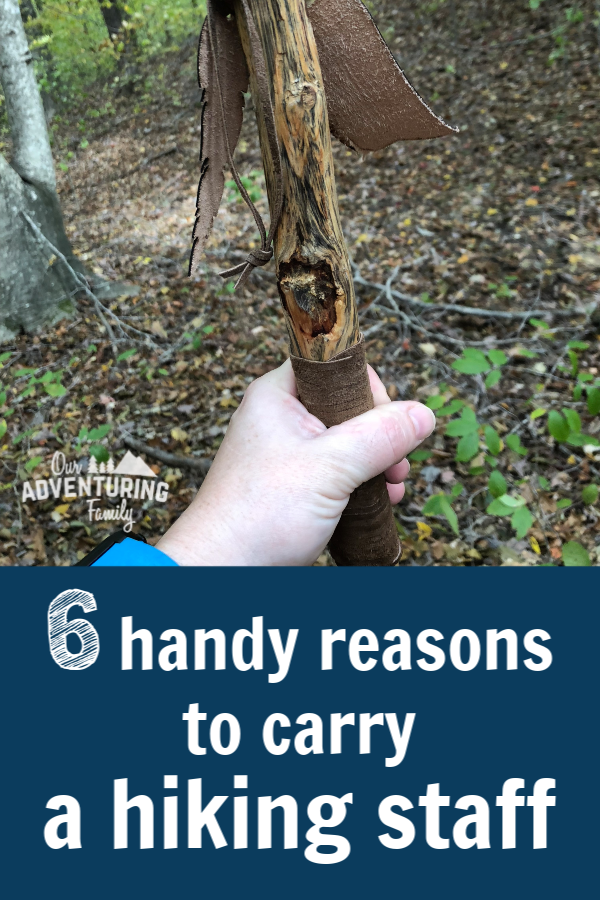
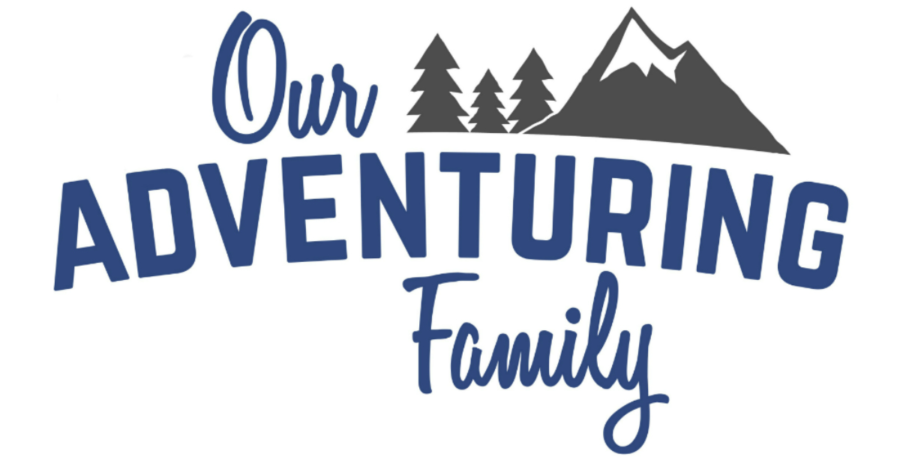
I have both. The staff for every day use (yes I need it). And hiking pole when I travel by air.
Here’s one to add to your list: as a beekeeper I’ve used mine to knock a swarm out a tree.